
International Journal of Prognostics and Health Management
Scope & Guideline
Transforming Engineering Insights into Health Management Excellence
Introduction
Aims and Scopes
- Prognostics and Health Management (PHM) Techniques:
The journal covers a wide range of methodologies aimed at predicting the health and remaining useful life of systems across various industries, including aerospace, automotive, and manufacturing. - Machine Learning and Data Analysis:
A significant focus is on the application of machine learning algorithms and data-driven approaches for fault diagnosis, anomaly detection, and predictive maintenance. - Condition Monitoring and Maintenance Strategies:
Research on condition monitoring techniques, maintenance planning, and control processes is emphasized, providing insights into optimizing operational efficiency. - Industry-Specific Applications:
The journal showcases studies that apply prognostics and health management principles to specific industries, such as oil and gas, automotive, and aerospace, highlighting unique challenges and solutions. - Integration of Cyber-Physical Systems:
There is a growing interest in the integration of cyber-physical systems and IoT technologies in health management, reflecting the trend towards Industry 4.0.
Trending and Emerging
- Artificial Intelligence and Deep Learning:
A surge in the application of AI and deep learning techniques for fault detection and prognosis, showcasing their potential to enhance predictive accuracy and operational efficiency. - Unsupervised Learning and Anomaly Detection:
Emerging interest in unsupervised learning methods for anomaly detection highlights the need for robust systems that can identify faults without labeled data. - Resilience and Robustness in Maintenance:
Research focusing on resilience and robustness in maintenance strategies is gaining traction, particularly in the context of uncertain operational environments. - Real-Time Health Monitoring Systems:
The development of real-time health monitoring systems, often integrating IoT technologies, reflects the industry's push towards continuous monitoring and immediate response mechanisms. - Cross-Domain Applications and Transfer Learning:
An increasing number of studies are exploring cross-domain applications and transfer learning, indicating a trend towards leveraging insights from one domain to improve health management in another.
Declining or Waning
- Traditional Statistical Methods:
There has been a noticeable decrease in the publication of papers focusing on traditional statistical methods for prognostics, as more researchers gravitate towards advanced machine learning techniques. - Generic Condition Monitoring Techniques:
The emphasis on generic condition monitoring approaches has waned, with a shift towards more tailored and industry-specific solutions. - Manual and Heuristic Maintenance Strategies:
Research centered on manual and heuristic maintenance strategies is becoming less prominent, possibly due to the automation and data-driven decision-making trends. - Single-Domain Studies:
There is a decline in studies focused on single-domain applications, with a move towards interdisciplinary approaches that integrate insights from multiple fields.
Similar Journals
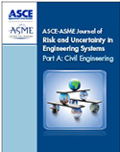
ASCE-ASME Journal of Risk and Uncertainty in Engineering Systems Part A-Civil Engineering
Empowering Civil Engineering Through Insightful Analysis.ASCE-ASME Journal of Risk and Uncertainty in Engineering Systems Part A-Civil Engineering, published by the American Society of Civil Engineers (ASCE), is a leading journal dedicated to advancing the understanding and application of risk and uncertainty in civil engineering systems. With an ISSN of 2376-7642, this journal has been a pivotal platform for researchers and practitioners since its inception in 2015, converging its rigorous exploration through to 2024. It holds a commendable position in the academic community, securing a Q2 rating in categories such as Building and Construction, Civil and Structural Engineering, and Safety, Risk, Reliability and Quality as of 2023. The journal aims to disseminate innovative research that tackles the critical challenges posed by uncertainty in engineering systems, thus promoting safety, sustainability, and reliability in infrastructure. With impressive Scopus rankings, including a 76th percentile in Building and Construction, it continues to attract high-quality contributions from scholars worldwide. Emphasizing open dialogue, the journal does not currently adopt an open access model but remains committed to providing essential insights for the enhancement of civil engineering practices. Researchers, professionals, and students alike will find invaluable resources to enhance their knowledge and practice in this dynamic field.
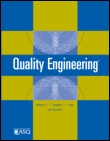
Quality Engineering
Advancing excellence in quality assurance and engineering.Quality Engineering, published by Taylor & Francis Inc, is a leading journal in the field of Industrial and Manufacturing Engineering and Safety, Risk, Reliability, and Quality. With a focus on the advancement of quality assurance and management practices, this journal has been a valuable resource since its inception, featuring research that spans from 1970 to the present day. The journal holds a commendable placement in the 2023 category quartiles, ranked Q2 in both relevant fields, highlighting its significance in contributing to innovative methodologies and solutions in quality engineering. Although currently not an open access publication, it continues to attract a wide array of contributions from researchers, professionals, and students dedicated to enhancing quality in engineering processes. With a Scopus rank reflecting its solid standing—75th percentile in Safety, Risk, Reliability and Quality and 62nd percentile in Industrial and Manufacturing Engineering—Quality Engineering remains an essential platform for disseminating knowledge that fosters excellence in the engineering domain.

Journal of Civil Structural Health Monitoring
Empowering engineers with cutting-edge insights into structural health.The Journal of Civil Structural Health Monitoring, published by SPRINGER HEIDELBERG, is a premier academic journal dedicated to advancing the field of civil and structural engineering, with a specific focus on the health monitoring of infrastructure systems. With an ISSN of 2190-5452 and an E-ISSN of 2190-5479, the journal has established itself as a leading source of rigorous research, evidenced by its impressive Q1 rankings in both Civil and Structural Engineering and Safety, Risk, Reliability, and Quality categories for 2023. As a widely respected platform, the journal offers researchers and practitioners access to high-impact studies, innovative technologies, and insights into the ongoing efforts to enhance infrastructure resilience. Despite its lack of an open-access model, the journal's content is accessible through institutional libraries, ensuring that a wide audience of engineers and scientists can benefit from the latest advancements. With its converged years from 2011 to 2024, the journal continues to play a vital role in shaping best practices and policy decisions in civil engineering, making it an invaluable resource for professionals, scholars, and students alike.

Machines
Innovating the future of technology through open research.Machines is a leading journal in the fields of engineering and computer science, published by MDPI in Switzerland since 2013. As an Open Access publication, it ensures that researchers, professionals, and students can freely access high-quality peer-reviewed research. The journal covers a diverse range of topics, including control and optimization, mechanical engineering, electrical engineering, and industrial manufacturing, boasting impressive rankings in various Scopus categories, such as Q2 in Computer Science and Control Systems Engineering. With a commitment to advancing knowledge and innovation in these critical areas, Machines serves as an essential platform for disseminating research findings and fostering collaboration within the academic community. By contributing to the ongoing dialogue in these dynamic fields, the journal plays a pivotal role in shaping the future of technology and engineering practices.

Structural Monitoring and Maintenance, An International Journal
Advancing structural safety through innovative research.Structural Monitoring and Maintenance, An International Journal is a prestigious publication dedicated to advancing knowledge in the fields of civil and structural engineering, as well as safety, risk, reliability, and quality assessment. Published by TECHNO-PRESS in South Korea, this journal serves as a vital platform for researchers, professionals, and students interested in the latest methodologies, technologies, and case studies pertaining to structural monitoring, assessment, and maintenance practices. With its current Q3 category ranking in both structural engineering and safety metrics, the journal aims to promote high-quality research that addresses real-world challenges in structural integrity and safety. As the journal converges its scope from 2014 to 2024, it continues to welcome innovative studies that contribute to the development of sustainable and resilient infrastructures worldwide. Despite the absence of an open-access option, the substantial readership is ensured through its indexed positions, currently ranked among the top journals in its field according to Scopus metrics. Engage with groundbreaking research that shapes the future of structural engineering and safety practices by delving into the contributions this journal offers.

Dyna
Illuminating diverse perspectives in engineering disciplines.Dyna, with the ISSN 0012-7361 and E-ISSN 1989-1490, is a prominent academic journal published by the Federación Asociaciones Ingenieros Industriales España. Situated in Spain, it is dedicated to advancing knowledge and research in the field of engineering, specifically focusing on diverse aspects within the Engineering (Miscellaneous) category. With a current Scopus rank of #245 out of 307, Dyna operates in the 20th percentile, emphasizing the journal’s commitment to fostering innovation and dialogue among scholars and industry practitioners alike. Although it operates under traditional access models, the journal is pivotal for researchers, professionals, and students seeking to contribute to the evolving landscape of engineering disciplines. Covering a broad range of topics from 2009 to 2024, Dyna aims to facilitate interdisciplinary collaboration and disseminate cutting-edge findings that can influence both academia and industry.
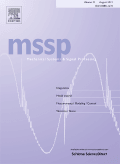
MECHANICAL SYSTEMS AND SIGNAL PROCESSING
Bridging critical fields to shape the future of technology.MECHANICAL SYSTEMS AND SIGNAL PROCESSING, published by Academic Press Ltd - Elsevier Science Ltd, is a leading journal that bridges multiple critical fields, including Aerospace Engineering, Civil and Structural Engineering, Computer Science Applications, Control and Systems Engineering, Mechanical Engineering, and Signal Processing. Established in 1987, this esteemed journal serves as an invaluable resource for researchers, professionals, and students seeking to advance the understanding of mechanical systems and their intimate relationship with signal processing techniques. With an impressive impact factor and consistently ranked in the Q1 category across various engineering and computer science disciplines, it offers rigorous peer-reviewed articles that contribute significantly to innovation and methodological advancements in the field. Although it does not currently offer Open Access options, its publication in the United States ensures a wide dissemination of high-quality research that shapes the future of engineering. The journal's convergence until 2025 promises to foster enduring discussions and collaborations that will continue to push the boundaries of technology and engineering applications.

Eksploatacja i Niezawodnosc-Maintenance and Reliability
Elevating standards in risk and quality management.Eksploatacja i Niezawodnosc-Maintenance and Reliability, published by the POLISH MAINTENANCE SOC, stands as a premier Open Access journal dedicated to the fields of industrial and manufacturing engineering as well as safety, risk, reliability, and quality. With its ISSN 1507-2711, the journal has been a pivotal resource since 2004, fostering knowledge dissemination and innovation within the engineering community. The journal boasts an impressive standing, reflected in its Q2 Quartile ranking in both relevant categories for 2023, and Scopus ranks indicating its significant impact in the domains it covers; specifically, it is positioned at the 50th rank in Safety, Risk, Reliability and Quality and 97th in Industrial and Manufacturing Engineering. Researchers and professionals exploring the intricacies and advancements in maintenance and reliability will find an array of pertinent studies, insights, and methodologies within its publications. Embracing an open access model, this journal not only enhances visibility and accessibility of research but also supports the vital exchange of ideas in the global engineering landscape.
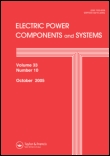
ELECTRIC POWER COMPONENTS AND SYSTEMS
Advancing the Future of Electric Power EngineeringELECTRIC POWER COMPONENTS AND SYSTEMS is a respected peer-reviewed journal dedicated to advancing the field of electrical and electronic engineering, energy engineering, and power technology. Published by Taylor & Francis Inc, this journal boasts a dynamic scope that encompasses a wide array of topics relevant to power systems, including renewable energy, power distribution, and component reliability. With an impact factor indicative of its ongoing contribution to research, it ranks in the Q3 category across multiple engineering disciplines according to the latest metrics. Researchers and professionals will find this journal an invaluable resource, offering insights into the latest developments and innovations in electric power systems from its inception in 2000 to the current era and beyond. Accessible online with Open Access options, it caters to both established experts and emerging scholars looking to deepen their knowledge and foster collaboration within this critical field.
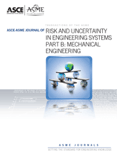
ASCE-ASME Journal of Risk and Uncertainty in Engineering Systems Part B-Mechanical Engineering
Empowering Engineers with Insights on UncertaintyASCE-ASME Journal of Risk and Uncertainty in Engineering Systems Part B-Mechanical Engineering, published by the reputable ASME, is a leading platform dedicated to advancing knowledge in the field of mechanical engineering with a particular emphasis on risk assessment and uncertainty analysis. With an ISSN of 2332-9017 and an E-ISSN of 2332-9025, this journal has established itself as a significant contributor to ongoing research in safety, risk, and reliability, consistently ranking in the Q2 quartile for Mechanical Engineering as well as Safety Research categories. As evidenced by its impressive Scopus rankings—including a notable 80th percentile in Safety Research—this journal fosters high-quality research that informs engineering practices and enhances safety protocols. Operating under a traditional access model, it aims to provide researchers, professionals, and students with essential insights and methodologies to address contemporary challenges in engineering systems. Each contribution reflects an aim to bridge theory and application, thus making the journal an invaluable resource for stakeholders striving for excellence in mechanical engineering and safety management.